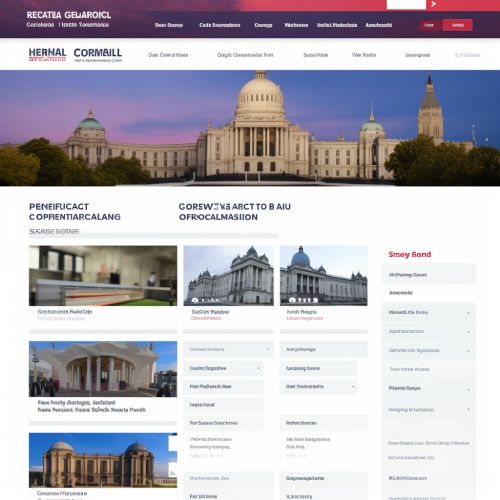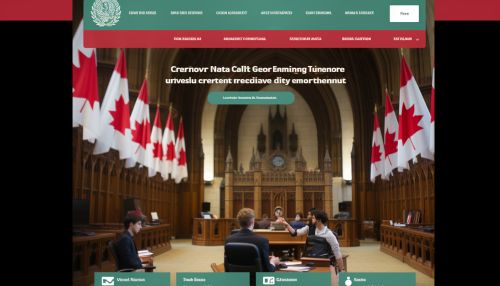Government website
Overview
A government website is a web-based platform that serves as the official online presence of a government entity. It may represent a specific department, agency, or the entire government of a country, state, or locality. These websites are typically designed to provide information, services, and resources to the public, as well as to facilitate communication between the government and its constituents.


Purpose and Function
The primary purpose of a government website is to provide a centralized, accessible platform where citizens, businesses, and other entities can interact with the government. This interaction can take many forms, from accessing information and services, to submitting forms or applications, to providing feedback or filing complaints.
Government websites often serve multiple functions, including:
- Information dissemination: Government websites are a key source of public information. They provide details about government policies, initiatives, and services, as well as updates on current events and issues. This includes everything from press releases and speeches, to statistical data and research reports.
- Service delivery: Many government websites allow users to access and use government services online. This can include services such as renewing a driver's license, filing taxes, applying for permits or benefits, or making payments.
- Public engagement: Government websites can also serve as a platform for public engagement, allowing citizens to participate in public consultations, provide feedback on proposed policies, or contact their elected representatives.
- Transparency and accountability: By making information and services readily available online, government websites can increase transparency and accountability. They can provide information about government spending, performance metrics, and decision-making processes, and can allow the public to monitor and scrutinize government activities.
Design and Usability
The design and usability of a government website are critical to its effectiveness. A well-designed website is easy to navigate, accessible to all users, and provides clear, concise information. Key elements of government website design and usability include:
- Accessibility: Government websites must be accessible to all users, including those with disabilities. This means they must comply with web accessibility standards, such as the Web Content Accessibility Guidelines (WCAG).
- User-centered design: Government websites should be designed with the needs and abilities of users in mind. This includes using clear, simple language, providing intuitive navigation, and ensuring that key information and services are easy to find.
- Security and privacy: Given the sensitive nature of many government services, government websites must have robust security measures in place to protect user data. They must also comply with privacy laws and regulations, and clearly communicate their privacy policies to users.
- Responsive design: With the increasing use of mobile devices, government websites must be designed to work effectively on a range of screen sizes and devices. This is typically achieved through responsive web design, which automatically adjusts the layout and functionality of the website based on the user's device.
Challenges and Issues
While government websites have the potential to greatly improve the delivery of government services and information, they also face a number of challenges and issues. These include:
- Digital divide: While the internet has become increasingly ubiquitous, there are still many individuals who lack access to reliable, high-speed internet. This digital divide can limit the ability of these individuals to access and use government websites.
- Usability issues: Despite the importance of user-centered design, many government websites still suffer from usability issues. These can include confusing navigation, unclear language, poor search functionality, and lack of mobile optimization.
- Security and privacy concerns: As with any online platform, government websites are vulnerable to cyber attacks. This can lead to breaches of sensitive data, undermining public trust in the government.
- Maintenance and updates: Keeping a government website up-to-date and functioning smoothly requires ongoing maintenance and updates. This can be a significant challenge, particularly for smaller government entities with limited resources.
Future Trends
As technology continues to evolve, government websites are likely to undergo significant changes. Some potential future trends include:
- Increased personalization: As with other types of websites, government websites are likely to become more personalized, providing tailored information and services based on the user's needs and preferences.
- Greater use of artificial intelligence: Artificial intelligence (AI) technologies, such as chatbots and machine learning algorithms, are likely to play an increasing role in government websites. These technologies can help to improve customer service, streamline processes, and provide more accurate and relevant information.
- Integration with other digital platforms: Government websites may become more integrated with other digital platforms, such as social media, mobile apps, and digital assistants. This can help to provide a more seamless and convenient user experience.
